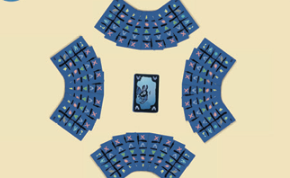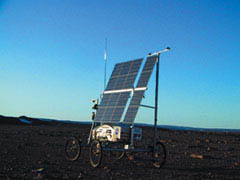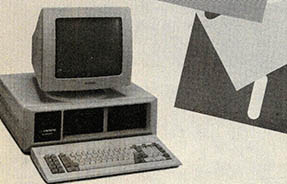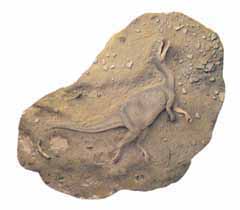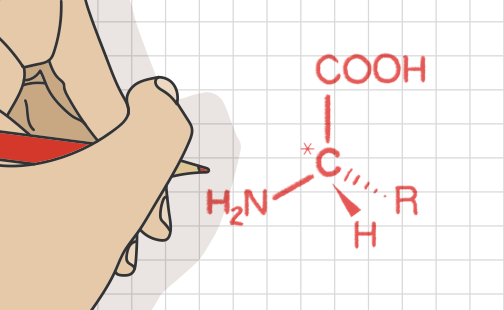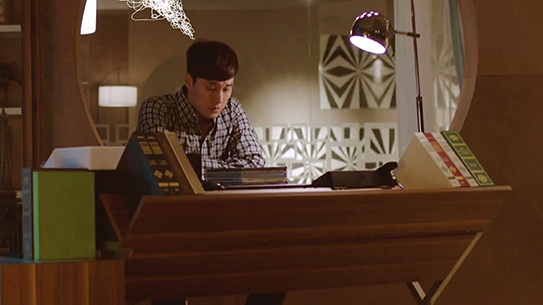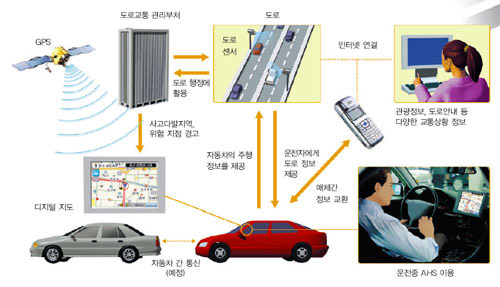1st place : NeoNurture Incubator
The genius of the NeoNurture incubator, developed by university students in the U.S., is that it employs an underutilized re source (old car parts) to solve critical social needs : functioning incubators to nurture premature newborns.
Headlights provide heat ; a repurposed dashboard fan circulates air ; a door-chime and signal-light is assembled into an alarm system that alerts nurses when things go wrong with the heating mechanism. The device can even be powered from a motorcycle battery.
2nd place : The Waterless Washing Machine
You probably don’t think about this every time you wash your clothes, but the U.S. uses more than 330 billion gallon of water on laundry each year, according to the British firm Xeros Ltd.
The company is developing a machine that draws cleaning power from reusable, stain-absorbing nylon beads, requiring much less water (as much as 90% less) than a normal washing machine. Prototypes are already out, and a commercial version is due out next year.
9th place : The English-Teaching Robot
South Korea, which employs some 30,000 foreigners to teach English, has plans for a new addition to its language classrooms : the English-speaking robot. Students in a few schools started learning English from the robo-teachers late last year ; by the end of this year, the government hopes to have them in 18 more schools.
The brightly colored, squat androids are part of an effort to keep South Korean students competitive in English. Not surpri singly, the proposal has worried a few human teachers, and with good reason. Experts say the robots could eventually phase out flesh-and-blood foreign English teachers altogether.
17th place : Road-Embedded Rechargers
In Korea, Seoul bus rides could soon be usi ng electricity in a lot new way. Engineers from the Korea Advanced Institute of Tech nology are experimenting with embed ding electric stripsin roadbeds that magne tically transfer energy to battery-powered vehicles above.
The prototype, at an amusement park in Gwacheon, just south of Seoul, is the first system in the world like it, and researchers say the technology could someday enable all electric vehicles to operate with one-fifth the battery size and at one-third the cost.
해석 2010년 최고 과학 발명품들
1위 : 신생아용 인큐베이터 '네오네처'
미국의 한 대학생이 개발한 네오너처는 고물 자동차의 부품을 재활용해 사회적 필수품인 미숙아 양육 인큐베이터를 만들었다는 점에서 뛰어난 발명품이다.
네오너처의 구조를 살펴보면, 헤드라이트가 인큐베이터에 열을 가하고, 개조된 에어컨 팬이 인큐베이터 내부의 공기를 순환시킨다. 발열장치가 잘못되는 경우 문에 부착하는 차임벨과 방향지시등이 간호사에게 경고신호를 보낸다. 이 장치는 오토바이용 배터리에서 전원을 공급받을 수도 있다.
2위 : 물을 사용하지 않는 세탁기
세탁할 때마다 이런 문제를 생각해본 사람이 드물겠지만, 미국에서만 매해 세탁을 위해 3300억 갤런(약 1조 2500억 리터)의 물을 사용한다고 한다.
영국의 제로스사는 기존의 세탁기보다 물을 90% 정도 적게 사용하는 세탁기를 개발하고 있다. 이 세탁기는 세제를 대신해서 재사용할 수 있는 얼룩흡수 나일론 구슬을 활용한다. 시제품이 이미 나왔고, 일반 상용 제품은 올해 출시될 예정이다.
9위 : 영어 교습 로봇
국내에는 약 3만 명의 외국인 영어교사가 있는데, 여기에 영어를 말하는 로봇이 추가됐다. 몇몇 학교에서는 이미 로봇 강사에게서 영어를 배우기 시작했다. 정부는 올해 말까지 18개 학교에 로봇 강사의 영어교육을 확대, 실시할 계획을 밝혔다. 밝은 색상의 외관에 앉아있는 자세로 만들어진 안드로이드 강사는 국내 학생들의 영어실력을 증진시키려는 목적으로 만들어졌다. 이로 인해 일부 교사들은 걱정에 빠졌다. 이러한 로봇 강사는 궁극적으로 피와 살을 가진 외국인 영어교사들을 모두 필요없게 만들 수 있기 때문이다.
17위 : 도로에 심어진 전기자동차용 배터리 충전기
서울에서는 곧 버스들이 매우 새로운 방식으로 전기를 사용할 것이다. KAIST의 엔지니어들은 전기충전장치를 도로변에 심어놓는 방안을 연구 중이다. 이 창치는 자동차 배터리에 에너지를 전달한다. 서울 과천에 위치한 놀이시설에서 시범적으로 운용되는 초기 모델은 전 세계에서 처음으로 시도되는 시스템이다. 연구자들은 이 기술이 기존 배터리 크기의 5분의 1, 기존 비용의 3분의 1만으로 전기자동차를 움직일 것으로 예측하고 있다.
.jpg)
The genius of the NeoNurture incubator, developed by university students in the U.S., is that it employs an underutilized re source (old car parts) to solve critical social needs : functioning incubators to nurture premature newborns.
Headlights provide heat ; a repurposed dashboard fan circulates air ; a door-chime and signal-light is assembled into an alarm system that alerts nurses when things go wrong with the heating mechanism. The device can even be powered from a motorcycle battery.
2nd place : The Waterless Washing Machine
You probably don’t think about this every time you wash your clothes, but the U.S. uses more than 330 billion gallon of water on laundry each year, according to the British firm Xeros Ltd.
The company is developing a machine that draws cleaning power from reusable, stain-absorbing nylon beads, requiring much less water (as much as 90% less) than a normal washing machine. Prototypes are already out, and a commercial version is due out next year.
9th place : The English-Teaching Robot
South Korea, which employs some 30,000 foreigners to teach English, has plans for a new addition to its language classrooms : the English-speaking robot. Students in a few schools started learning English from the robo-teachers late last year ; by the end of this year, the government hopes to have them in 18 more schools.
The brightly colored, squat androids are part of an effort to keep South Korean students competitive in English. Not surpri singly, the proposal has worried a few human teachers, and with good reason. Experts say the robots could eventually phase out flesh-and-blood foreign English teachers altogether.
17th place : Road-Embedded Rechargers
In Korea, Seoul bus rides could soon be usi ng electricity in a lot new way. Engineers from the Korea Advanced Institute of Tech nology are experimenting with embed ding electric stripsin roadbeds that magne tically transfer energy to battery-powered vehicles above.
The prototype, at an amusement park in Gwacheon, just south of Seoul, is the first system in the world like it, and researchers say the technology could someday enable all electric vehicles to operate with one-fifth the battery size and at one-third the cost.
해석 2010년 최고 과학 발명품들
1위 : 신생아용 인큐베이터 '네오네처'
미국의 한 대학생이 개발한 네오너처는 고물 자동차의 부품을 재활용해 사회적 필수품인 미숙아 양육 인큐베이터를 만들었다는 점에서 뛰어난 발명품이다.
네오너처의 구조를 살펴보면, 헤드라이트가 인큐베이터에 열을 가하고, 개조된 에어컨 팬이 인큐베이터 내부의 공기를 순환시킨다. 발열장치가 잘못되는 경우 문에 부착하는 차임벨과 방향지시등이 간호사에게 경고신호를 보낸다. 이 장치는 오토바이용 배터리에서 전원을 공급받을 수도 있다.
2위 : 물을 사용하지 않는 세탁기
세탁할 때마다 이런 문제를 생각해본 사람이 드물겠지만, 미국에서만 매해 세탁을 위해 3300억 갤런(약 1조 2500억 리터)의 물을 사용한다고 한다.
영국의 제로스사는 기존의 세탁기보다 물을 90% 정도 적게 사용하는 세탁기를 개발하고 있다. 이 세탁기는 세제를 대신해서 재사용할 수 있는 얼룩흡수 나일론 구슬을 활용한다. 시제품이 이미 나왔고, 일반 상용 제품은 올해 출시될 예정이다.
9위 : 영어 교습 로봇
국내에는 약 3만 명의 외국인 영어교사가 있는데, 여기에 영어를 말하는 로봇이 추가됐다. 몇몇 학교에서는 이미 로봇 강사에게서 영어를 배우기 시작했다. 정부는 올해 말까지 18개 학교에 로봇 강사의 영어교육을 확대, 실시할 계획을 밝혔다. 밝은 색상의 외관에 앉아있는 자세로 만들어진 안드로이드 강사는 국내 학생들의 영어실력을 증진시키려는 목적으로 만들어졌다. 이로 인해 일부 교사들은 걱정에 빠졌다. 이러한 로봇 강사는 궁극적으로 피와 살을 가진 외국인 영어교사들을 모두 필요없게 만들 수 있기 때문이다.
17위 : 도로에 심어진 전기자동차용 배터리 충전기
서울에서는 곧 버스들이 매우 새로운 방식으로 전기를 사용할 것이다. KAIST의 엔지니어들은 전기충전장치를 도로변에 심어놓는 방안을 연구 중이다. 이 창치는 자동차 배터리에 에너지를 전달한다. 서울 과천에 위치한 놀이시설에서 시범적으로 운용되는 초기 모델은 전 세계에서 처음으로 시도되는 시스템이다. 연구자들은 이 기술이 기존 배터리 크기의 5분의 1, 기존 비용의 3분의 1만으로 전기자동차를 움직일 것으로 예측하고 있다.
.jpg)
| 본고는 타임-워너사의 기사들을 기초로 하여, 한국 학생들의 영어교육을 위해 문장과 내용을 새롭게 수정 및 편집한 글입니다. |





